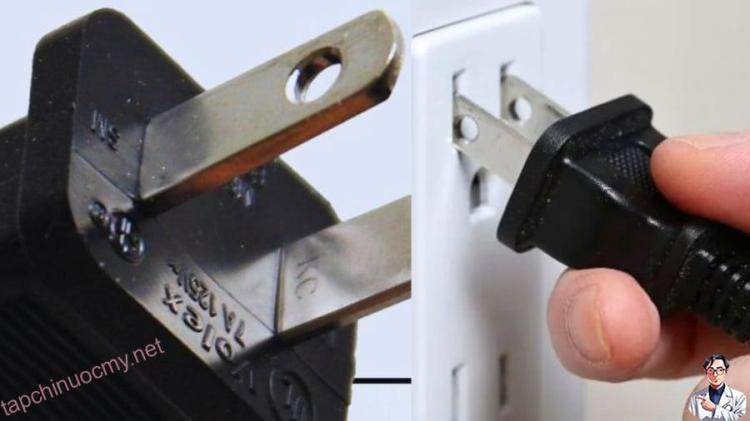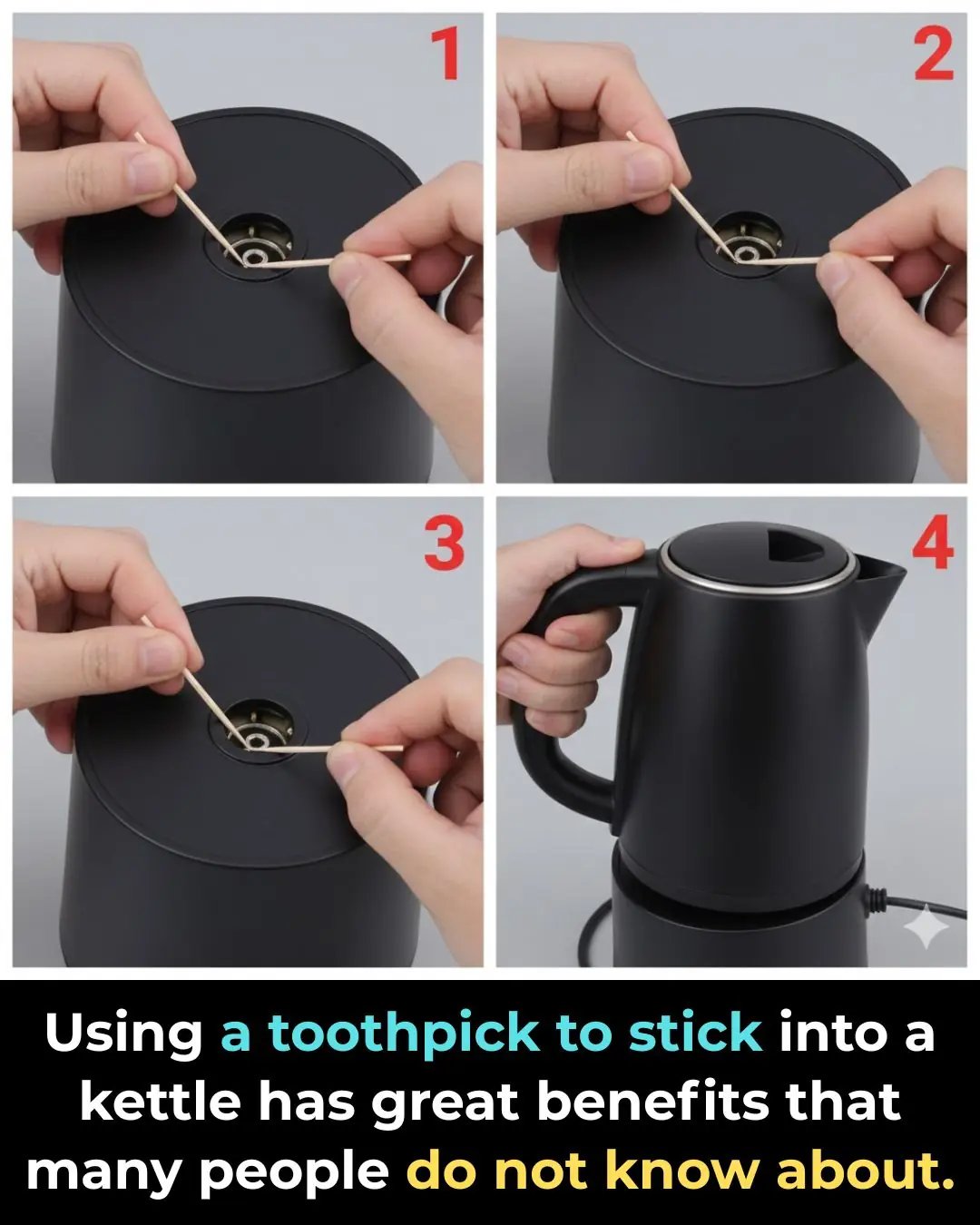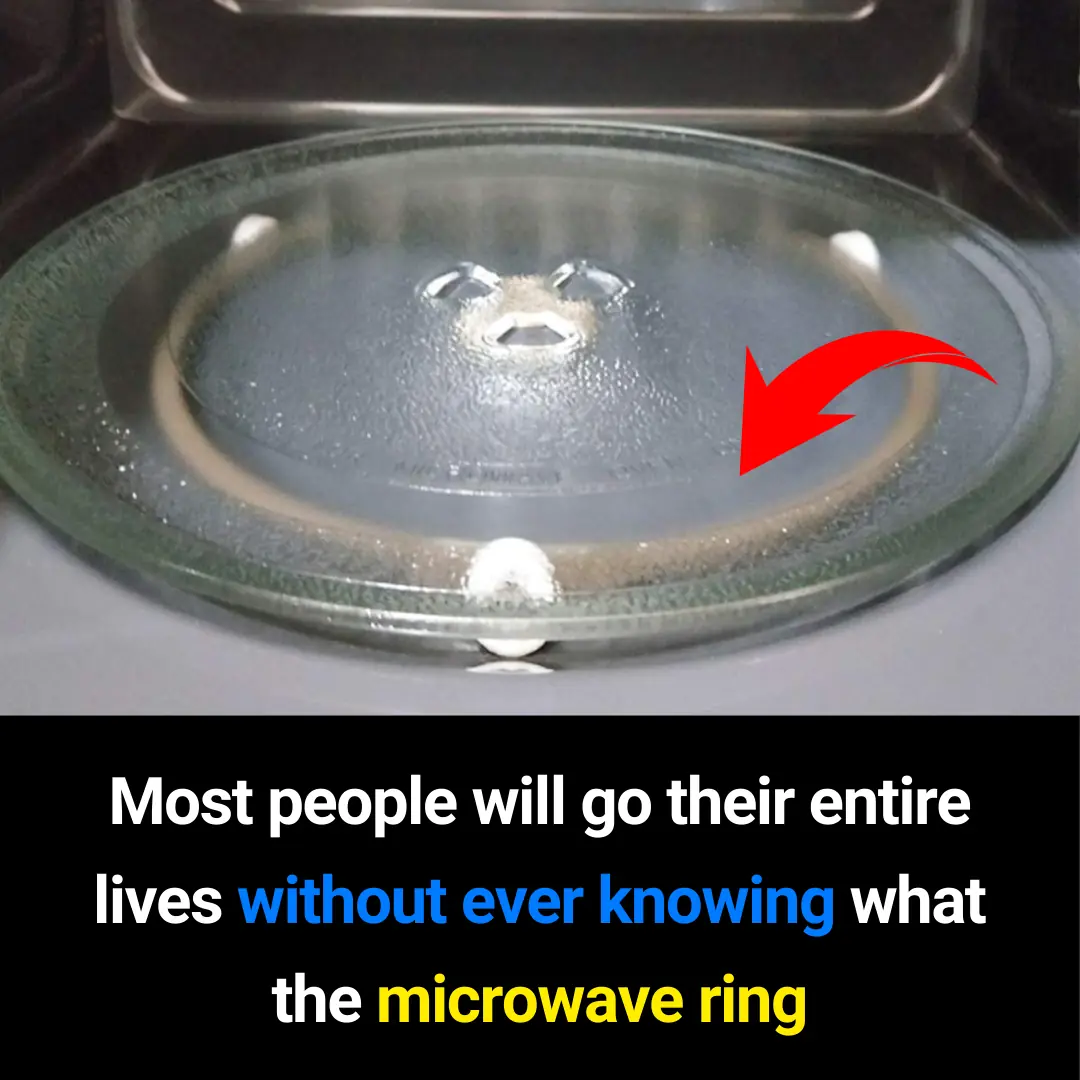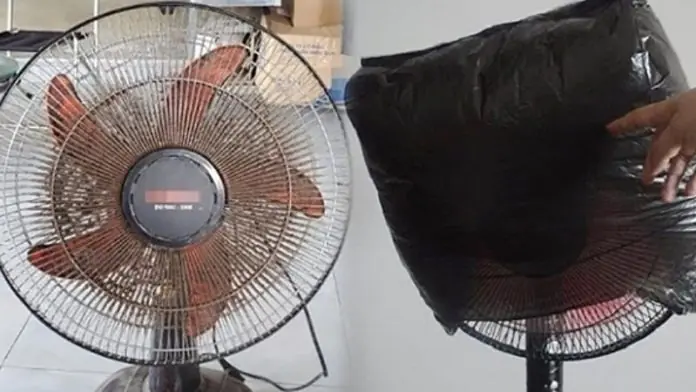
Why do flat plugs always have two small holes? It turns out they have surprising uses that many people don't know about.

Many electrical plugs feature two small holes on their prongs, and these seemingly minor details actually serve important safety and practical purposes.
Electrical plugs typically come with either flat (Type-A or Type-B) or round prongs. On many flat prongs, you will notice small circular holes near the tip. Most consumers tend to overlook these holes or are unaware of their purpose.
In fact, these two holes help the plug stay securely in the socket. Standard electrical outlets often have small protrusions inside that fit precisely into these holes, ensuring a tighter connection between the plug and the metal contacts inside the socket. This reduces the risk of loose prongs and electrical leakage, making flat-prong plugs a safer option—especially in homes with young children—by helping prevent accidental electric shocks.
Historically, plugs were designed with indented grooves on their prongs. However, these grooves created friction when inserting the plug, sometimes leading to sparks and short circuits. Replacing the grooves with holes minimized this friction, making plugs safer and easier to insert without the risk of electrical arcing.
Additionally, manufacturers sometimes use the holes to attach seals, allowing consumers to distinguish between new and previously used products. Despite their small size, these holes also help save a significant amount of steel in mass production, which is particularly valuable in large-scale manufacturing.
The invention of these prong holes dates back to Harvey Hubbell Jr., who worked extensively to make plugs easier to insert. His initial solution involved small indentations that would align with corresponding bumps in the socket, but eventually, these indentations were replaced with holes while retaining the original concept.
There are primarily two types of flat-prong plugs that use holes: Type-A plugs with two flat prongs and Type-B plugs with two flat prongs plus a round grounding prong. These plug types are common in the United States, Canada, Japan, and several other countries, following the NEMA standard. In contrast, many European and Asian countries still use round-prong plugs, which do not require holes because the prong-and-socket design provides sufficient grip.
Choosing Safe Electrical Outlets and Plugs
When purchasing plugs and outlets, many people overlook the importance of selecting high-quality products. Low-quality outlets can cause a range of hazards, including electrical arcing, fires, and damage to household appliances like refrigerators, washing machines, and televisions. Over time, poor-quality outlets may also melt or deform, creating further risk of electrical accidents. To ensure safety, consider the following guidelines:
-
Buy from reputable stores: Always purchase plugs and outlets from official retailers. Look for materials that are fire-resistant and heat-tolerant, such as ABS or PVC plastics.
-
Check the power rating: Evaluate the total power consumption of devices you plan to connect. For high-demand setups, choose outlets with higher power ratings and built-in breakers that automatically cut off electricity when overloaded.
-
Inspect the product: Ensure there are no cracks, exposed wires, or other defects. Selecting products with a warranty or insurance coverage can provide additional protection.
-
Follow safe usage practices: Always handle plugs by the body, not the cord, when unplugging. Avoid placing outlets in damp areas, and regularly check plugs and sockets for wear or damage.
By understanding the purpose of these small prong holes and following proper safety practices, households can greatly reduce the risk of electrical accidents, protect their appliances, and create a safer environment for children.
News in the same category


Doctors reveal the #1 supplement to reduce dementia risk

Fresh, delicious, firm field crabs, just aim for this spot, 10 out of 10 will be correct.

Cooking sticky rice for the full moon offering in a rice cooker is as quick and sticky as using a steamer thanks to this secret.

Why You Should Keep a Small Amount of Cash Behind Your Phone Case — A Useful Trick Few People Know

Clogged Toilet? Just Use This Simple Method — Water Will Flow Smoothly Again in 5 Minutes

7 Frozen Foods That Are Even Better Than Fresh — More Nutritious and Time-Saving

So useful! Gonna watch out for these

How to Make Fermented Peach Lemon (Chanh Đào) With Rock Sugar and Honey — A Highly Effective Homemade Remedy for Coughs

How to fry delicious, green, and neat spring rolls made from 10 leaves like 1

Using a toothpick to stick into a kettle has great benefits that many people do not know about.

Drop essential oil on toilet paper roll: Get 2 special benefits that everyone wants to learn

Put a handful of peppercorns under the bed, unexpected uses, many people wish they knew sooner

Don't rush to throw away the top, it can be turned into a wonderful spice, very necessary in the kitchen.

What Is a Microwave Ring Cover? Why This Small Part Matters More Than You Think (SEO-Friendly Guide)

10 Foods That Help Combat Fatty Liver: Nutrition Experts Recommend Eating Them Daily

Don’t Throw Away Bubble Wrap—Keep It in Your Kitchen and You’ll Be Surprised by Its Uses

Dirty fan? No need to remove the frame or use water: This simple method makes your fan spotless and shiny

You're doing it all wrong. Here’s the right way to clean humidifiers
News Post

What Happens If You Eat 4 Whole Eggs Every Day for 30 Days?

Thicker Thighs Linked to Lower Risk of Heart Disease and Diabetes, Study Finds

Breakthrough Drug Offers Hope for Restoring Vision by Repairing Nerve Insulation

Avoid Ginger If You Have THESE Health Problems

Nobel Prize-Winning Discovery of Autophagy: The Body’s Self-Repair Mechanism

Dietary RNA: A Key to Slowing Cellular Aging and Promoting Longevity

The Role of Fish Oil Supplementation in Enhancing Fat Loss and Muscle Growth: A Scientifically Supported Approach

Dandelion Root Extract Shows Potential to Eliminate Up to 95% of Cancer Cells in 48 Hours

Meet the Solar-Powered Sea Slug: The First Animal Known to Photosynthesize!

13-Year-Old Boy's Heartwarming Act of Sacrifice: Buying His Mother a Car Through Hard Work and Compassion

Living With a Rare Condition, a 25-Year-Old Faces One of Life’s Hardest Decisions

Simple Ways to Reduce Nighttime Wake-Ups and Improve Sleep Quality.

Aretha Duarte Makes History As First Black Latin American Woman To Climb Mount Everest

Doctors reveal the #1 supplement to reduce dementia risk

The Coffee Photo That Survived the War.

Issa Rae Opens New ‘Downtown Dough’ Pizzeria in L.A.

From Hardwood Hero to Human Inspiration: The Legacy of Rodney Rogers.

The step-by-step plan to drop 30 pounds quickly in 2025

The Weight Bryce Couldn’t Carry Alone.
